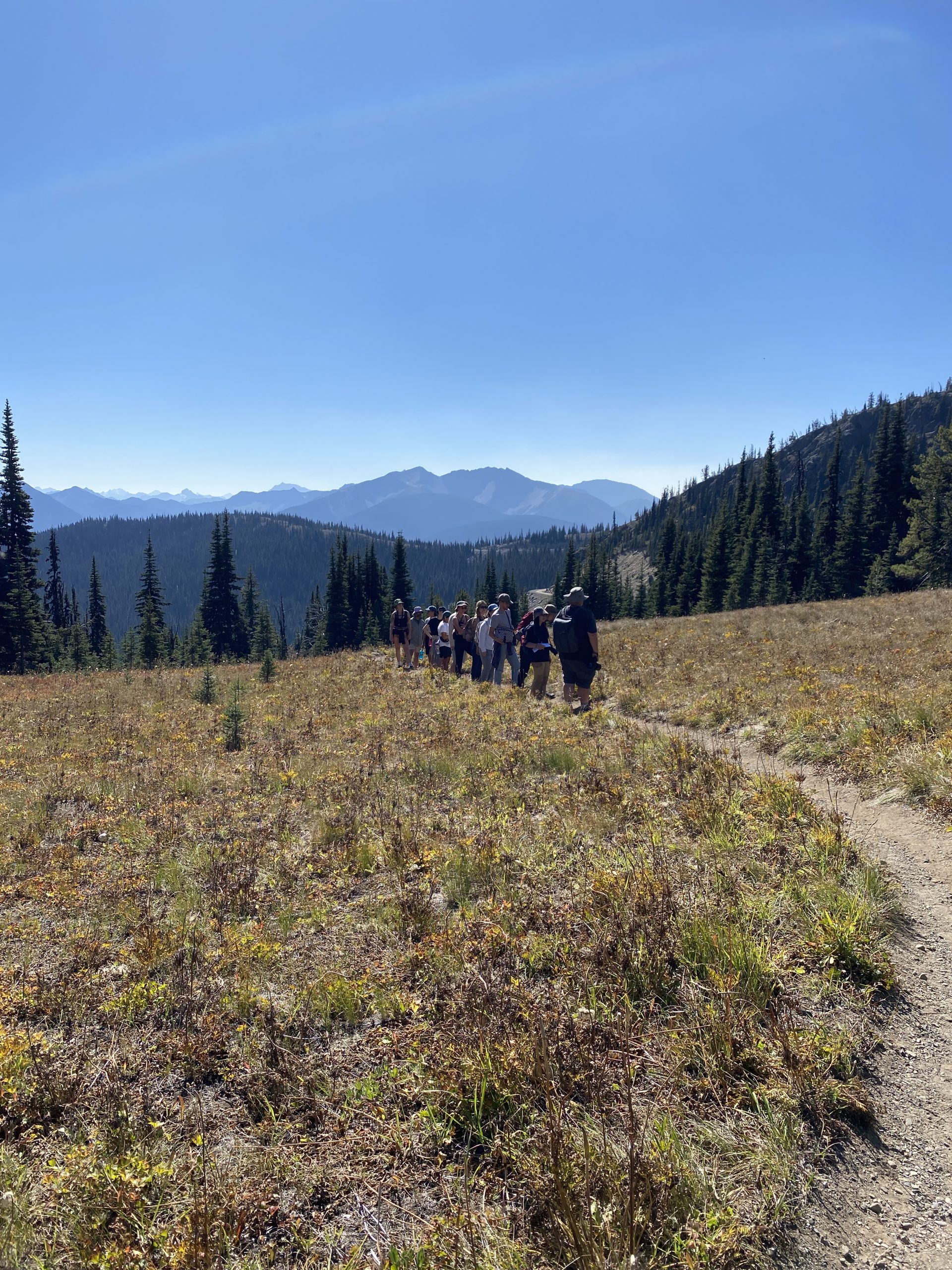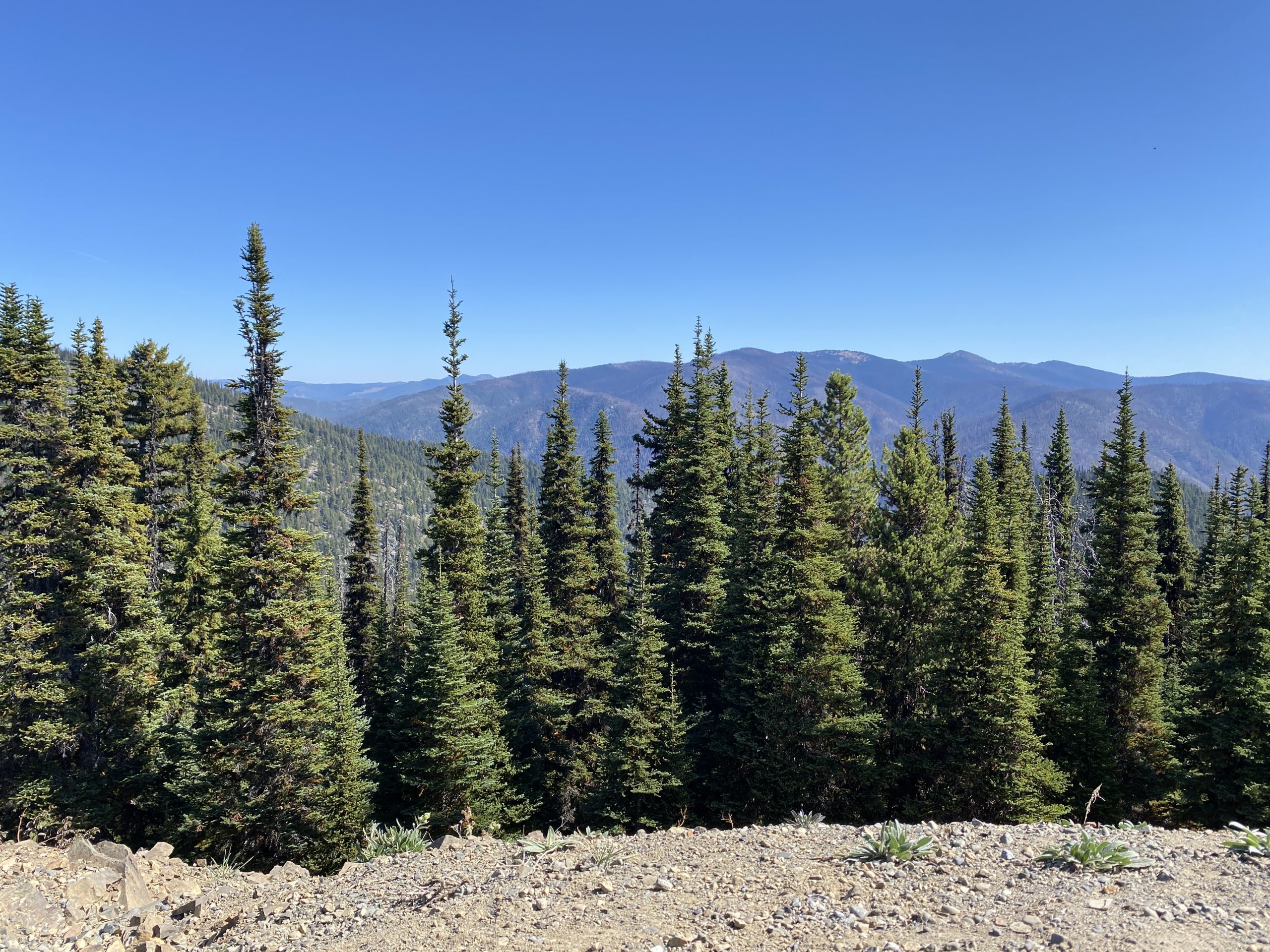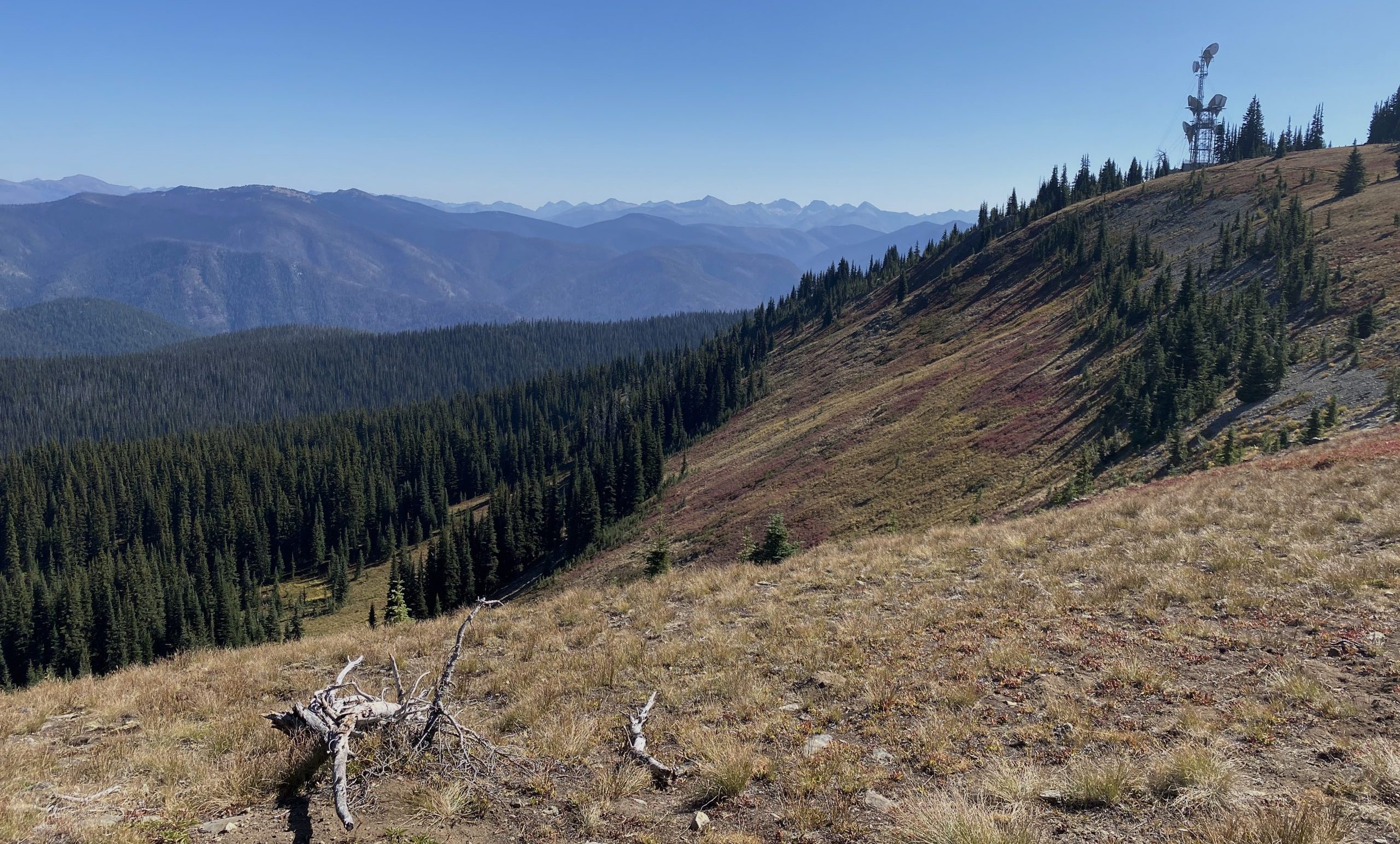
In horticulture training, learning extends beyond the walls of lecture halls and the borders of the garden. The immersive experience of a field trip offers students an invaluable opportunity to connect theory with practice while nurturing their passion for plants and the environment. To start off the new school year, UBC Botanical Garden’s Horticulture Training Program students embarked on a day trip beyond the Fraser Valley, visiting the Hope Slide, Sumallo Grove and Manning Park’s subalpine meadows. Students and instructors connected as a group to expand their knowledge and deepen their appreciation for the intricate beauty of nature.
 The destination for this excursion was carefully chosen. Daniel Mosquin, the HTP Plant Sciences Instructor, aimed to show a diverse landscape from those scarred by earthquakes to lush, forested areas to now-arid subalpine meadow. As students arrived at the Hope Slide meet-up point, anticipation mingled with excitement and awe at the impact of the slide on the landscape. The smell of smoke lingered in the air, as wildfire season was still raging throughout BC. While there was no fragrance of blooming flowers or vibrant colors that you’d see in a garden, there were pockets where nature was recovering in the rocky landscape. Birds were dotted throughout what trees had managed to grow in the 58 years following the powerful force of 47 million cubic metres of rock, mud and debris scarring the landscape.
The destination for this excursion was carefully chosen. Daniel Mosquin, the HTP Plant Sciences Instructor, aimed to show a diverse landscape from those scarred by earthquakes to lush, forested areas to now-arid subalpine meadow. As students arrived at the Hope Slide meet-up point, anticipation mingled with excitement and awe at the impact of the slide on the landscape. The smell of smoke lingered in the air, as wildfire season was still raging throughout BC. While there was no fragrance of blooming flowers or vibrant colors that you’d see in a garden, there were pockets where nature was recovering in the rocky landscape. Birds were dotted throughout what trees had managed to grow in the 58 years following the powerful force of 47 million cubic metres of rock, mud and debris scarring the landscape.
One might think that this landscape was an odd place to start our journey. Why would we begin in an area so relatively devoid of ‘nature’? As Daniel explained, “We’re starting here because it gives us an opportunity to see what happens when a landscape is ‘reset’. What plants are first to grow? Where do they first establish? What can we learn about microhabitats? Will the first plants persist, or will they be replaced? What can we observe and then apply to starting a new garden?”
From there, we headed east 20km along the Crowsnest Highway, skirting the edge of mountains through the Sunshine Valley to arrive at Sumallo Grove. The lush green forest floor and thick canopy of trees made a poignant contrast with the landscape of 15 minutes ago. Daniel led the class on a guided tour among the large conifers growing alongside the slow-flowing summer-deep Skagit River, stopping to examine plants like pink purslane (Claytonia sibirica), burdock and Pacific yew (Taxus brevifolia). All notes of smoke were gone, as we breathed in the fresh air among the fulsome, heavy smell of pines – much like the lenticels of red alder (Alnus rubra) on the riverbanks exchanging respiratory gases. The students eagerly absorbed the wealth of knowledge shared about rare plant species and the ecological significance of preserving biodiversity. The tour served as an eye-opener, revealing the interconnectedness of various plant species and their roles in sustaining ecosystems. After our walk, students explored on their own to reflect on the impact of the natural world around them. As instructors, it was also a time to breathe in and take a few moments of respite within the forest. Feeling heady and happy, I stole a few minutes to reflect and write some short haiku:
Leaves turn, autumn nears
Cool shallows in the river
Burdock on the trail edge
Daniel and I quickly chatted about the possibility of flying squirrels at the Botanical Garden, and wondered if we may catch a glimpse of some within Sumallo Grove. When the students reconvened, one of the HTP students, Adrian shared, “The timing of the trip early in the year was beneficial for team bonding and setting a positive tone for the upcoming months. The writing activity was a nice touch on the trip, allowing us to process the trip’s impact.”
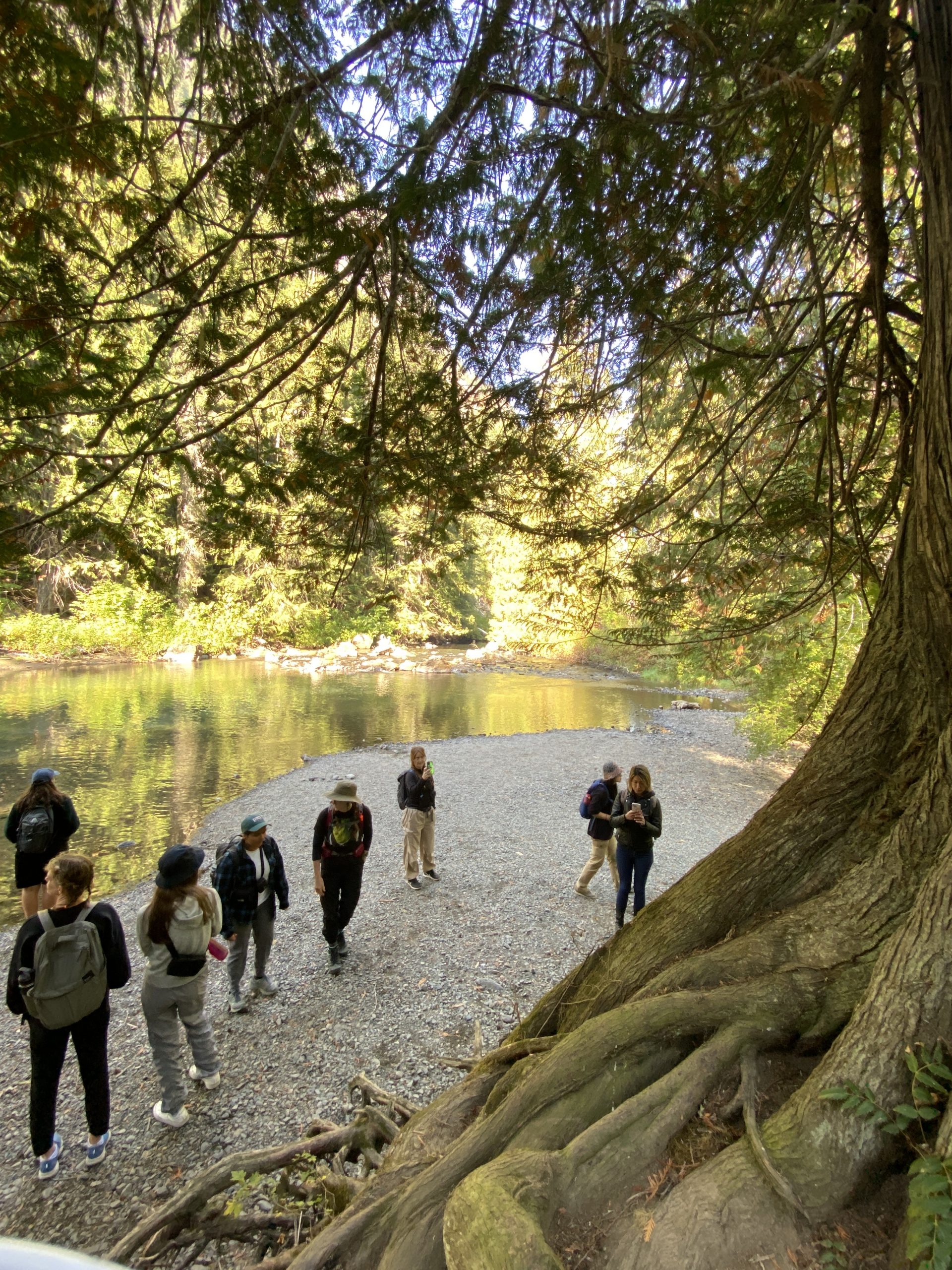

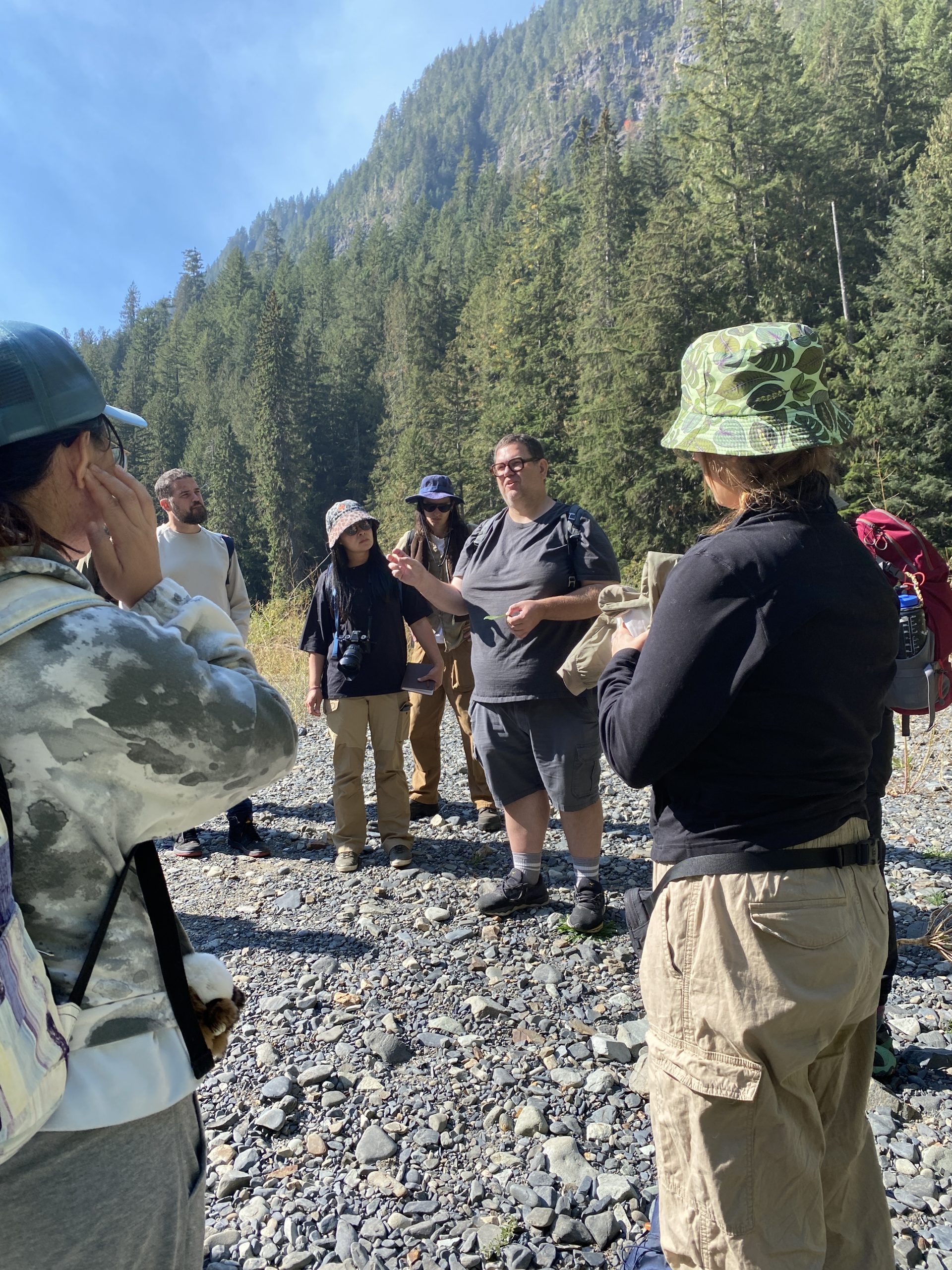
All too soon, we left the comfort of the grove and headed further east to Manning Park’s more mountainous experiences. We stopped for lunch at Cascade Lookout and were joined by chipmunks and Clark’s nutcrackers. From the lookout, we tried to spot golden larches in the distant mountains (no luck) but also briefly examined from a distance one of the westernmost Ponderosa pines in the park. One of the highlights of the trip was coming up, perhaps a little unexpectedly, as we continued up the mountain road, towards Three Brothers and the Paintbrush Trailhead.
Refueled from lunch, a thin line of students meandered our way up the alpine pathway, looking for the paintbrushes the trail was named after (again no luck, they had already senesced). However, we did examine the fruiting heads of western pasqueflower (Anemone occidentalis), which are analogous to dried-up raspberries wearing villous (long and shaggy) hairs. Daniel pointed to the whitebark pines (Pinus albicaulis) and connected their reproductive ecology with the life cycle of the Clark’s nutcracker. Students maneuvered through the pathways, sharing newly learned plant knowledge, and speaking to each other about their budding horticultural interests. The hike along the trail took us through vistas that many of the students had never experienced, like the autumn colours of alpine heather.
As we wound our way up the mountain, we were all surprised to meet other folks hiking along the pathways – to the students delight, we met several retired botanists and horticulturists who shared their life experiences and trail insights with us! It was quite inspirational for the students to hear from those who spent their careers working in their chosen field. As if the stars were aligned, we couldn’t have planned for more fortuitous trail encounters. The immersive experience of a field trip extended beyond traditional horticultural practices. Interactive sessions such as these helps guide sustainable gardening practices and environmental conservation in the students. Discussions around eco-friendly pest control methods, water-wise gardening, and the importance of native plants in landscaping to promote biodiversity were a central part of the field trip.
The beauty of the field trip lay not just in the academic learning but also in the camaraderie it fostered. As the day progressed, students exchanged anecdotes, shared their passion for plants, and forged friendships bound by a common love for horticulture. They became a community united by their enthusiasm for nurturing green spaces and preserving the natural world.
In the end, a horticulture student field trip is not merely an outing—it’s a transformative experience. It’s a symphony of colors, scents, and knowledge that resonates long after the day ends, nurturing a lifelong passion for plants and the environment. Each student departed with a newfound zeal, inspired to apply the lessons learned in their academic pursuits and future careers.
